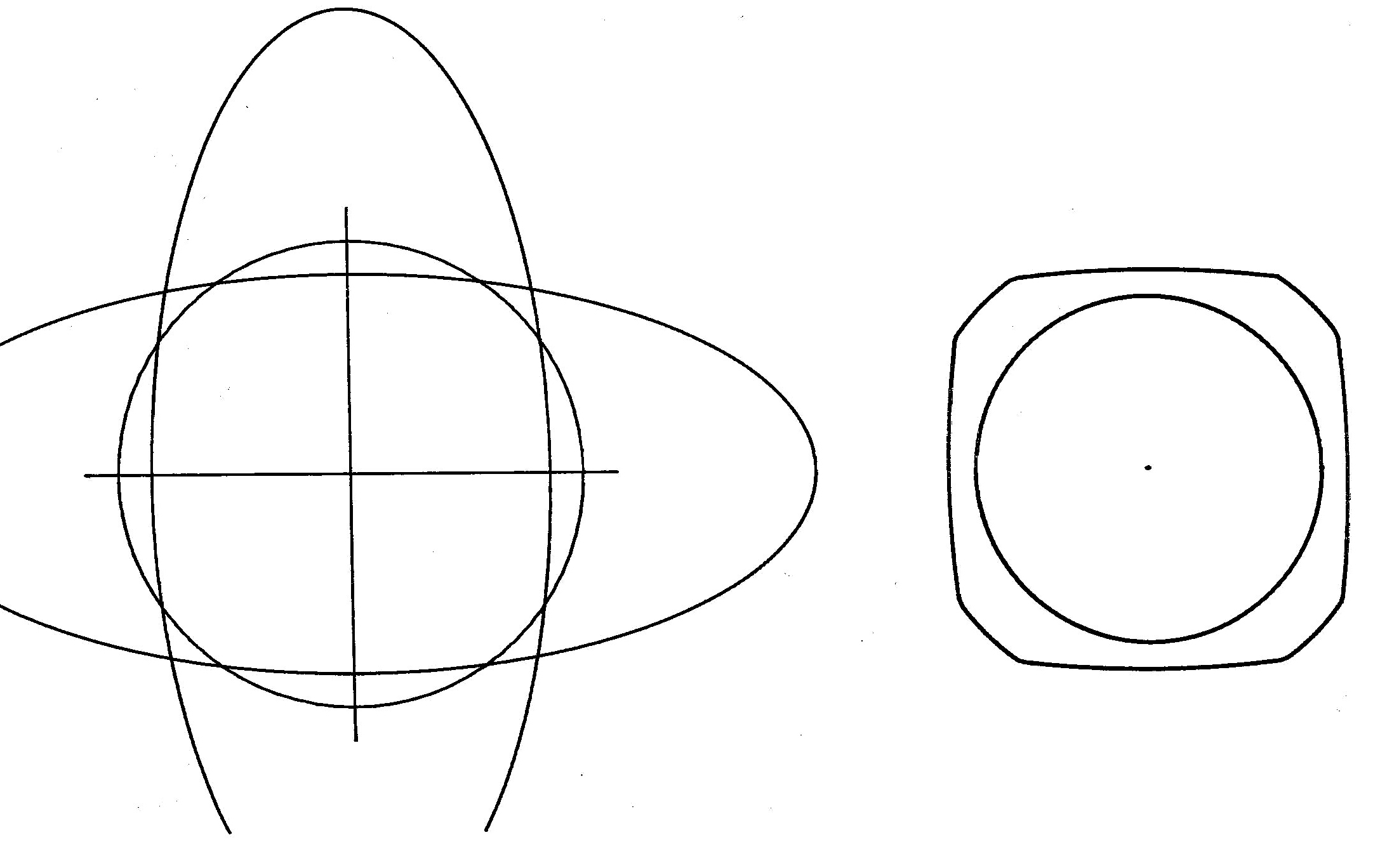10 Design |

|
The following list shows that ovalturning has mainly be used for turning useful articles. The oval turned pieces of the Gallery section originate from the workshop of Johannes Volmer, however there is not an oval turned piece for every example specified in the list. Decorative pieces or "artistic" oval pieces are not shown, only some examples of geometrical studies are illustrated. Professor Gottfried Böckelmann in Hildesheim turned some very beautiful oval pieces on his Geiger Ovalwerk [1.1.6]. It is his opinion that the new ovalturning lathes (ODM) could again reinvigorate the techniques of ovalturning, and he suggests: ”It is important that new designs of suitable and relevant oval turned pieces are produced to ensure that the neglected art of ovalturning will continue to be of interest.”
In the museums there can be found artistically oval turned artifacts in most varied forms, for examples the goblets and boxes in the Green Vault in Dresden [ 1.1.5 ] or the Coburg Ivories in the Pitti Palace in Florence [ 1.1.3 ]. These old pieces could provide ideas for modern oval turned pieces.
|
|
List of oval turned objects for usage |
|
1 |
frames for pictures, portraits, mirrors |
|
2 |
window frames |
|
3 |
bowls, shallow and deep |
|
4 |
dishes |
|
5 |
platters |
|
.6 |
plates |
|
.7 |
trays |
|
8 |
tureen, lidded |
|
9 |
boxes, lidded |
|
10 |
mugs |
|
11 |
vessels |
|
12 |
vases |
|
13 |
cups, goblets |
|
14 |
bread and meat boards (breakfast and cutting boards) |
|
15 |
lockets, medallions |
|
16 |
escutcheons |
|
17 |
name plates |
|
18 |
furniture elements: handles, ornaments |
|
19 |
desk sets (for pencils etc.) |
|
20 |
hand mirrors |
|
21 |
brush bodies |
|
22 |
bracelets |
|
23 |
jewellery elements |
|
24 |
napkin rings |
|
25 |
moulds for press glass, ceramics, porcelain and butter |
|
26 |
lamp posts and parts |
|
27 |
Spice mill bodies (pepper), nutmeg grater, salt shaker |
|
28 |
cutlery handles |
|
29 |
tool handles |
|
30 |
bashers (for meat), mallets |
|
31 |
kitchen treen (spatulas, spurtles, ladles, scoops) |
|
32 |
pedastel, base, plinth |
|
33 |
hats, hat molds |
|
34 |
toy parts |
|
35 |
music instrument parts (bassoon horn) |
|
36 |
experiments, tricks, joke article |
When drafting oval pieces the designer has one dimension more at his disposal than when designing round objects. So far this advantage has only been used in a classical way. It is suggested that modern forms are explored and past forms are re-examined. At the beginning - also with experiments - a design drawing will stand. Using the computer, as a tool,will allow the more complicated geometrical/mathematical problems to be solved and at the same time produce good working drawings.
Part of the woodturner´s apprenticeship is the understanding and production of technical working drawings [ 1.1.2 ] [ 1.1.4 ]. Today computer programs for drawings are available. One can thereby produce, as soon as one knows or has sketched the intended cross section, arbitrary views of the complete intended piece and also provide an impression of its spatial effect. Rotating a round body, i.e. a rotational symmetric body, around its axis the same figure is always to be seen. It is not the same with oval pieces. The following perspective drawings of the views of an oval bowl in net representation show the very different, partly unexpected figures. Consider e.g. the forms and mutual positions of the two ellipses at the bottom and at the rim of the bowl.

Figure
7001
Side views and top view of a bowl with elliptical contour line and
parabolic cross section line
 |
 |
 |
|
Figure 7002 |
When circular turning, interesting forms can be obtained by turning the piece around different axes. A number of books show examples but not all look good. With ovalturning form variants can be achieved only by rotating the workpiece around its central axis. The following figures show those designs, a hexagonal bowl with elliptical hollowings (figure 7003) and a four-edged box with elliptical-cylindrical flanks and circular hollowing (figure 7004). With the cabaret (Figure 7005) the problem presented is to ensure that the five oval bowls and the round bowl in the centre all have the same area.
|
|
 |
|
Figure7003 |
Figure 7004 Tetrahedral box with elliptic-cylindrical and round internal space |

Figure 7005 Cabaret with six bowls of equal areas


